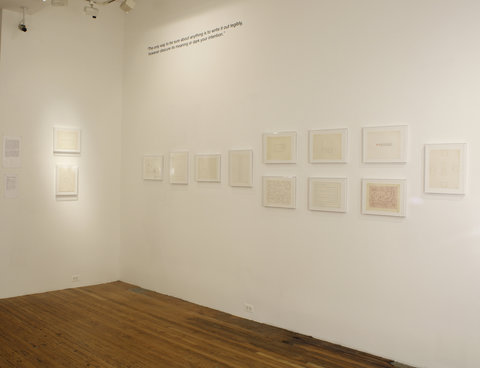Stuart Sherman, a member of the important generation of American avant-garde performance artists who rose to prominence in the late 1960s and early 1970s, developed his own unique style across various media, the impact of which continues to resonate with the avant-garde eight years after his death. He devoted a large amount of his time to the creation of performances he called “spectacles”, which often took the form of small tabletop performances. These performances involved the manipulation of both familiar and unfamiliar everyday objects atop one or more folding TV dinner tables. Performed by a poker-faced Sherman, the spectacle performances sit in a unique hybrid space that moves between references to various genres including comedy, magic, musicals, minimalism, surrealism, opera, three card monte games, fluxus, and vaudeville. Through these performances, which consisted of series of intricately structured object manipulations, he crafted a unique identity both as creator and performer. While the spectacle performances were generally miniature in scale, they were certainly not miniature in ambition, exploring with great wit topics such as time, language, mortality, eroticism, and personal identity.
Although Stuart Sherman is, perhaps, best known for his object spectacles, as well as for his films (that are currently been restored by the Museum of Modern Art) and videos (available through Electronic Arts Intermix), this exhibit aims to present a broad view of the range of his artistic achievements, firmly establishing his place as a highly influential figure of the 1970s downtown art world. The show explores the extraordinary career of this artist through documentation of his larger scale theatrical productions, sculptural proposals, daily collages from the 1990s, and poetry. Exhibited for the first time is an extraordinary series of ideographic and language-based drawings executed in the 1970s, which provide the immediate context for spectacle performances.
The title of the exhibit—Beginningless Thought/Endless Seeing—taken from a syllabus for a class Sherman taught, defines his work and the nature of his process. In combining these disparate and widely unknown materials for the first time, this exhibition highlights the various manifestations of his endless thinking, the richness and depth of his artistry across genre boundaries, and the philosophical themes that informed the central core of his artistic identity.

